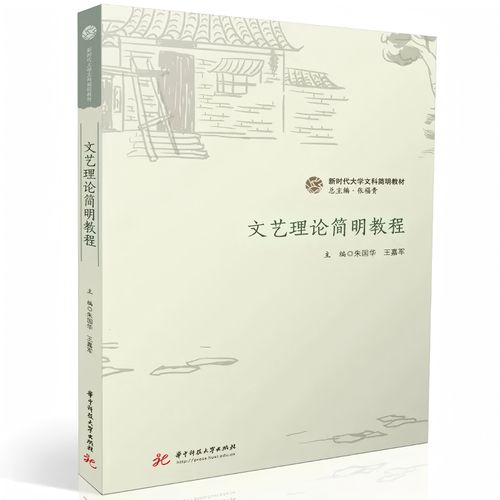
Editors-in-Chief: Zhu Guohua, Wang Jiajun
Publication Date: April 2025
Publisher: Huazhong University of Science and Technology Press
ISBN: 9787577217406
In the current era swept by the wave of digitalization, artificial intelligence and the digital economy are reshaping the educational model of traditional liberal arts represented by Chinese language and literature. Against this backdrop, a set of professional textbooks that can both inherit classics and embrace new trends is particularly important. A Concise Course in Literary and Art Theory emerges as the times require, providing new ideas and directions for the education of the Chinese language and literature major in the new era. Centering on five themes—"Literature and the World," "Forms of Literature," "Literature and Human Studies," "Literature and Aesthetics," and "Literature and History"—the textbook systematically, concisely, and in a way that is easy to understand, sorts out and expounds literary and art theory from specific perspectives such as "Literature and Society," "Literature and Language," "Literature and Emotion," and "Literature and Taste." Each chapter of the textbook is divided into three main parts: theoretical explanation, reading practice, and key word analysis. It focuses on exploring theoretical contexts, refining theoretical points, and strives to bridge the gap between theoretical research and critical practice, allowing texts and theories to mutually verify and interpret each other, thereby making literary and art theory more vivid.
It is not easy to stand out among numerous textbooks for the Chinese language and literature major, but A Concise Course in Literary and Art Theory has unique values and characteristics:
First, conciseness. Literary and art theory is vast, with endless views from theorists at all times and in all countries. This course takes "problems" as the starting point and "core concepts" as the key, selecting 18 of the most representative concepts that balance nationality and cutting-edge nature. The language is easy to understand, with both theoretical explanations and text case analyses, allowing theories and texts to mutually confirm each other. It is vivid and down-to-earth, while not losing theoretical depth and critical thinking.
Second, cutting-edge nature. The knowledge of literary and art theory is updated rapidly, partly due to the development and changes of literature and art themselves, and partly due to their interdisciplinary nature, which is influenced by innovations in different disciplines. The course invites young and middle-aged scholars from various fields to integrate new perspectives and methods when expounding key points, introducing cutting-edge theories such as "event theory," "posthuman theory," and "ecological theory," helping readers keep abreast of the dynamics of literary theory research and interpret literature and texts in a new way.
Third, an anti-essentialist compilation approach. In the debate on the essence of literature in the literary theory circle at the beginning of the 21st century, the anti-essentialist view holds that literature has no fixed essence but is influenced by history, culture, and context. This textbook agrees with this view, using "and" to connect literature with all things, emphasizing relationships rather than definitions. This approach is reflected from the "compilation" of the textbook to the chapter titles, building a well-connected theoretical channel for readers.
Fourth, and most importantly, the theoretical goal of integrating Chinese and Western elements. China has a long history of literary and art theory research with its own system, but in modern times, there has been an over-reliance on Western literary theory. A Concise Course in Literary and Art Theory attaches importance to introducing contemporary cutting-edge Western literary theories, while promoting the excellent traditional resources of Chinese literary theory. It aims to construct a literary theory discourse system with Chinese characteristics through comparison and mutual learning, showing an inclusive and magnificent image of literary theory.
The compilation of A Concise Course in Literary and Art Theory follows the principles of standardization of basic knowledge, individualization of core issues, and diversification of professional backgrounds. It will inject new vitality into the construction of textbooks for the Chinese language and literature major, helping to cultivate new 复合型 (interdisciplinary) talents with "broad caliber, solid foundation, emphasis on ability, and pursuit of individuality," and is worthy of attention from teachers, students, and researchers.


